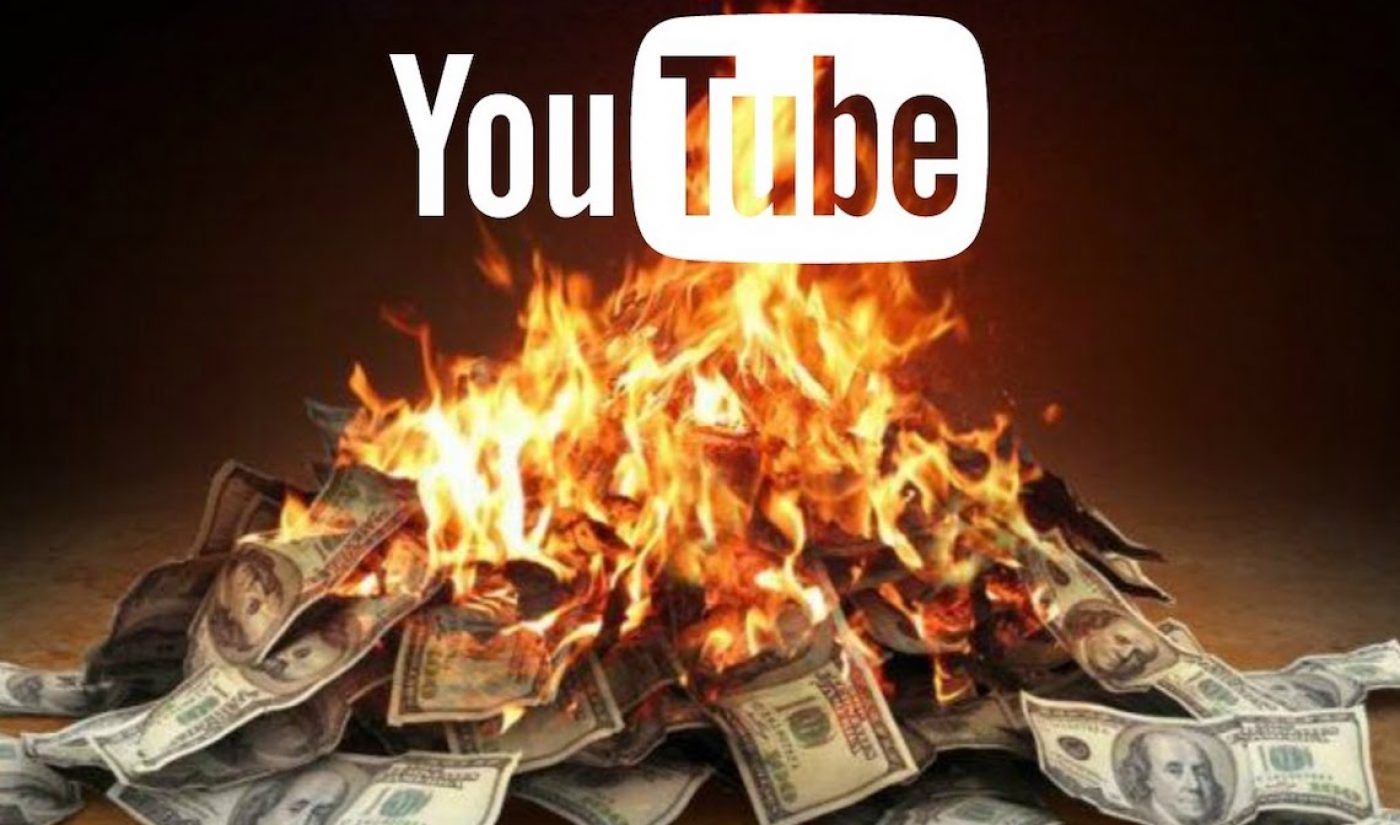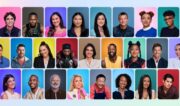YouTube’s waves of demonetization are being referred to as the #Adpocalypse. It’s a quick shorthand and an appropriately internet way to describe an internet problem. But it also raises critical questions. Is it temporary or permanent? Will these storms pass? Or is this the new normal, with at least some creators’ advertising revenue unlikely to rebound? In other words, are we truly witnessing the beginning of the end of YouTube as we know it?
The big-picture trends in the digital video business, plus the changes to YouTube’s algorithm we saw last year, point to something far larger — and potentially permanent. The old YouTube is not coming back, because YouTube is no longer interested in just being YouTube, featuring and catering to its homegrown creators of the past decade. The future of YouTube is YouTubeTV and to a lesser degree YouTube Red — and the future is suddenly now.
Yet this trend is bigger than just YouTube: none of the large public-company digital video platforms are interested in focusing on individuals digital creators anymore. All of them are moving “upmarket” to focus on TV — or on TV-like content, with longer formats and more advertiser-friendly subject matter. This is happening right at the same time that the larger media companies are unbundling their content and looking to broadcast on mobile and the web. These moves show no signs of ending or reversing, and in fact they follow well-known patterns in the business world.

Subscribe for daily Tubefilter Top Stories
Moving to a TV-like model also carries with it a second important shift: at any ad-supported media network, when advertisers get pitted against entertainers and producers, the advertisers always win. The #Adpocalypse is the clearest manifestation of this reality to date, and it will be far from the last. If you rely only on advertisers, then the advertisers choose what airs.
Creators and their managers are thus approaching a crossroads. The platforms that built the digital video ecosystem are now leaving it behind, and it is now time for the ecosystem to evolve. New platforms must fill the void, and creators need multiple revenue streams open to them — rather than being overly dependent on advertisers.
Movin’ on up: the video innovator’s dilemma
What is happening to the digital video space now is seen often in the business world. Companies rise to the top of their industries through innovation, but unless there is a monopoly or something close to it, competition between companies will likely mean that profit margins eventually plateau or dwindle. For a company to stay successful, it needs to find new lines of business with higher profit margins, going “upmarket.”
Once a company finds a way to move upmarket, they tend to focus on those new higher-margin businesses and to leave their less profitable businesses behind. They also risk over-delivering for their existing customers, providing them with a supposedly bigger, better version of their original product, even if it’s something that customers do not really want or need.
YouTube and its rivals fit this model well. YouTube was the first mass-market digital video platform, and they deployed AdSense, the first digital video monetization system. Other competitors have followed, however: Facebook in particular, but also Vine (owned by Twitter), Instagram (owned by Facebook), and Snapchat, as well as Dailymotion internationally.
All this competition, plus the exponentially expanding supply of videos, has had a downward effect on the profit margins for digital video (in turn lowering the CPM that platforms pay creators).
So now these platforms are all seeking higher margins upmarket; in fact, this is the rational thing to do from their perspective. YouTube has taken the lead on this. In 2015, the world’s largest video sharing site launched YouTube Red as a premium subscription service. In 2016, it made substantial changes to its algorithm for featuring videos, heavily favoring Watch Time and the ability for a publisher to get viewers to come to YouTube multiple times a day. That latter variable in effect now promotes videos by major media companies (e.g. The Tonight Show, BuzzFeed) rather than those of homegrown YouTubers.
Now in 2017, Google has launched YouTubeTV as a second premium subscription service, and the company have systematically demonetized homegrown YouTuber content deemed unfriendly to advertisers. While the new services are intriguing, it can easily be argued that YouTube has over-delivered on what appears to be a bigger, better version of itself — but yet one that no one really wanted or needed. Critically, YouTube and its rivals have the ideal partners to seek higher margins: the major media companies, which are all eager to unbundle their content offerings and push their TV and film content to mobile devices and laptops as viewing patterns continue to shift in that direction, especially among younger demographics.
This is the new world that has emerged: a giant partnership between the largest digital video distributors (YouTube, Facebook, etc.) and the largest content makers (Comcast, Disney, Time Warner, CBS, Viacom, and News Corp). It is the seemingly rational business move for all of those companies, and it is enormously lucrative. But it means that individual digital creators are crowded out.
YouTube is far from alone in all of this. Facebook has also changed its algorithm to favor watch time, as well as to require creators to pay for boosting their own posts to ensure that their own fans will actually see them; Instagram has started to follow suit.
Twitter shut down Vine entirely, for an array of reasons, and it would appear that one reason was so they could free up cash to do things like pay for the rights to stream certain NFL games (long considered the gold standard of TV content in the US). Twitter won those rights in 2016; this year, Facebook, Amazon, and YouTube all jumped in to bid, with Amazon ultimately winning. Now Twitter’s latest moves are to partner with Bloomberg Media to bring a 24-hour news network to Twitter, plus partnerships with BuzzFeed and Live Nation.
Snapchat has purposefully looked past individual creators, focusing instead on expensive advertising activations with large brands. And Dailymotion publicly announced last month that it is re-launching the platform to focus on premium content, de-emphasizing content from creators and users.
What this all means for individual creators is simple: the big platforms are moving on, and in all likelihood, they are not really ever going to come back. YouTube in particular will likely still allow some individual creators to monetize their content, but only if they are advertiser-friendly. Even then, creator content will be crowded out by videos from bigger media companies, and any advertising dollars could get pulled at any time.
Meanwhile, almost all of the smaller platforms are focused on livestreaming or have a much younger audience or a particular content niche (e.g. Musical.ly/Live.ly, Live.me, YouNow). So where does this leave the creator community that is now being left behind?
What the creator world needs now
Creators need new homes for their content and for the devoted communities they’ve worked so hard to build. If the platforms that helped establish the digital video ecosystem are no longer as interested in maintaining that ecosystem — not out of ill will but simply because it seems to be the rational business move — then smart creators need to move on, act in their own rational business interests, and diversify. When they do move on, they need to find platforms and solutions that meet their needs, and new platforms must listen to those needs if they wish to succeed.
The disasters in the ecosystem have had a positive impact, though. Both the death of Vine and now #Adpocalypse have demonstrated how vital it is for creators to have multiple revenue streams. Viners were almost entirely reliant on brand deals, and Twitter never rolled out an in-house monetization system to give Viners another way to make money. YouTubers have predominantly relied on advertising revenue through AdSense, and now it is all too clear to everyone that the big brands giveth and the big brands taketh away. As Hila Klein from h3h3Productions put it recently, this has been a “wake-up call” after creators had long been “so comfortable on YouTube.”
Older mediums have already been through the evolution that digital video now needs to undergo — except that digital video has the potential to do it even better.
TV has long been able to accommodate at least three different models of paying creators: advertising, viewer subscriptions, and, to a lesser extent, viewer donations. Advertisers support content on ABC; viewers pay for subscriptions to HBO; viewers donate to PBS. Radio now has multiple revenue sources as well: advertisers pay for FM and AM radio, subscribers support SiriusXM (which allowed Howard Stern to move from clashing with advertisers to being supported by his fans), and now podcasts (which are really just radio, unbundled) are supported by an array of advertisers, purchases, and donations.
As it enters its second decade of existence, the digital video ecosystem is starting to support a more diverse array of funding streams, but the currently existing streams are not yet enough to offset the crashing revenue many creators are seeing in the #Adpocalypse.
Donations are becoming more prevalent, with creators using Patreon, or earning tips or other fan currency on Live.ly, Live.me, Twitch, and YouNow. Creators are turning to brand deals to help make up for lost AdSense revenue, and platforms like Social Bluebook are helping to facilitate more and better brand deals for creators. These revenue streams have been important for numerous creators, but they are not enough on their own to make up for the losses on AdSense.
Subscriptions are a different story, but again there’s a lesson to be learned. Vessel attempted to operate on a user subscription model; they tried to be the premium cable to YouTube’s network TV. And yet it did not succeed, for two primary reasons: the YouTube superfans who would be most likely to care about seeing their favorite creators’ content a few days early are teens who are unlikely to be able or willing to pay anything extra when YouTube is free. And Vessel never successfully developed a slate of exclusive content that would have made a subscription appealing.
YouTube Red is now following a similar path, except with exclusive content — a more promising path that has been followed by cable TV for decades, and more recently by Netflix, Hulu, and Amazon. Yet there still remains the problem of relying on subscription revenue from fans, when those fans are predominantly teens who don’t have credit cards and who are accustomed to watching their favorite creators for free. This is unlikely to succeed, as Red’s performance seems to bear out.
This brings us back to advertising revenue based on views and CPM. It is still likely to be the primary form of revenue overall, with brand deals and then donations and other fan-supported systems being secondary. And if YouTube demonetizes, Facebook never fully embraced monetization for creators, Twitter turns away from creators entirely, and Snap never wanted them in the first place, what are creators supposed to do?
Where do we go from here?
Digital video needs new platforms that can integrate multiple revenue streams for creators, including revenue based on views and CPM, without relying on fans to pay money. And we need this right away.
This is where we can start to see the bright side of the business trends discussed above. When all the large, successful companies move upmarket, it creates a vacuum in the space they have left behind — and new companies can fill that vacuum with new disruptive technologies and products that are simple and inexpensive for customers.
So what if the #Adpocalypse isn’t the beginning of the end, but the end of the beginning? What if we could have a new digital video world that’s even better than the one that now appears to be collapsing?
The #Adpocalypse might be here to stay, and the old YouTube may be gone forever. But these changes create opportunities, both for the industry as well as individual creators. Rather than fight these trends or try to cling to false hopes that they will be temporary, it’s time for us all to embrace the changes — and to evolve.
 Tristan Snell is the COO and Co-Founder of Snakt, a creator-centric video platform that empowers creators and allows anyone to be a creator, with game-changing technology that turns videos into legos, protects content owners’ IP, allows for frictionless revenue sharing among multiple creators.
Tristan Snell is the COO and Co-Founder of Snakt, a creator-centric video platform that empowers creators and allows anyone to be a creator, with game-changing technology that turns videos into legos, protects content owners’ IP, allows for frictionless revenue sharing among multiple creators.
Prior to Snakt, Tristan worked with many of the top tech and Internet companies in the US — in web services (Yahoo, Craigslist), cellular and GPS hardware (Broadcom), and medical devices (J&J, Smith & Nephew) — as well as a number of startups in clean energy and life sciences, working on everything from IP and patent litigation to Internet law to appellate litigation. Tristan also served as Assistant Attorney General of the State of New York, working on consumer protection issues in e-commerce, financial services, for-profit education, and consumer tech, including prosecutions (Trump University), landmark multi-million dollar settlements (Wells Fargo, Chase, B of A), and groundbreaking cooperative agreements in web and mobile commerce (WalMart, Walgreens, CVS, Costco).
You can find him on Twitter @TristanSnell.








